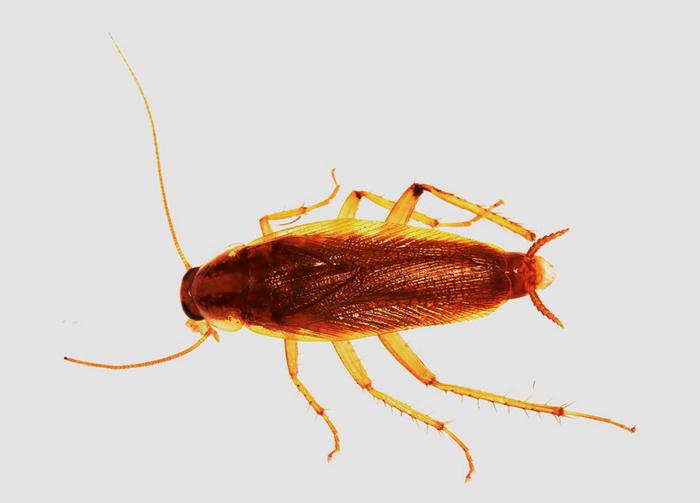Annapolis, MD; August 14, 2024—A common variety of consumer insecticide sprays is mostly ineffective and of “little to no value” in eliminating cockroach infestations, a new study shows.
Annapolis, MD; August 14, 2024—A common variety of consumer insecticide sprays is mostly ineffective and of “little to no value” in eliminating cockroach infestations, a new study shows.
Residual insecticides are designed to be sprayed on surfaces where cockroaches are likely to appear, exposing them to the toxic ingredient when they move across the surface later. But laboratory testing by researchers at the University of Kentucky and Auburn University shows that the residues have little effect on German cockroaches (Blattella germanica), a primary species infesting homes and buildings around the world.
The study found that liquid and aerosol sprays using pyrethroid insecticides killed less than 20 percent of German cockroaches that were exposed to sprayed surfaces for 30 minutes. Moreover, even when cockroaches were confined to the sprayed surfaces, most products took eight to 24 hours to kill the cockroaches, with some taking up to five days. Published August 14 in the Journal of Economic Entomology, the study tested the sprays on German cockroaches that had been collected from real-world infestations, where the insects have evolved resistance to pyrethroids, previous research shows.
“If residents do not have access to effective professional pest control or consumer solutions, they continue to be impacted by the effects of an infestation, including the health risks associated with cockroach allergens. Home is where people should be able to relax and feel comfortable,” says Johnalyn Gordon, Ph.D., lead author on the study and a postdoctoral associate at the University of Florida. Gordon conducted the study while a graduate research assistant at the University of Kentucky in the lab of Zach DeVries, Ph.D., assistant professor of urban entomology and senior author on the study. Their study was supported by a grant from the U.S Department of Housing and Urban Development.
Cockroach control, while challenging at times, is obtainable, the researchers say, but it typically is time intensive and costly in terms of products applied. A key problem is that German cockroaches are almost universally resistant to pyrethroids.
“Due to the frequent use of pyrethroid-based residual products, it is very likely that German cockroaches inside of homes will have some degree of pyrethroid resistance,” Gordon says. “To the best of our knowledge, a pyrethroid-susceptible German cockroach population has not been documented from the field in decades.”
However, current requirements from the U.S. Environmental Protection Agency do not require insecticide products to be tested on cockroaches recently collected from the field or with demonstrated insecticide resistance.
“Hopefully studies like this one can drive changes in product testing and evaluation, so that labels accurately reflect the level of control these products can provide,” Gordon says.
Additional factors likely contribute to the poor performance of the residual spray products, such as surface type and cockroach behavior. Gordon and colleagues tested the sprays on painted drywall, ceramic tile, and stainless steel and found that they performed significantly worse on drywall. Even a population of cockroaches without resistance to pyrethroids that was included in the study was minimally affected by the residual sprays on drywall. “This suggests that how porous a surface is may have a significant impact on product efficacy,” Gordon says. “Given common applications of residual insecticides along baseboards, reduced efficacy on painted drywall was a particularly striking finding.”
Meanwhile, cockroaches are unlikely to come to rest for extended periods on surfaces treated with insecticides, both because they are often on the move and because they may actively avoid them. A separate study in DeVries’ lab published last year found resistant German cockroaches will not remain in contact with pyrethroid-treated surfaces for an extended period time, if given the choice.
More promising DIY options for cockroach control include gel or liquid baits, which attract roaches to a food source laden with a slow-acting insecticide, Gordon says. Ideally, consumers could also have access to affordable professional pest-control services that take a multipronged approach known as integrated pest management, or IPM. However, this is often not the case for residents of low-income, multi-family housing, where cockroach infestations are often stubbornly persistent.
“There is a strong base of knowledge and research on how we can control cockroaches, but there are numerous economic and procedural barriers that mean that this control is not occurring in these areas, arguably where it is the most needed,” Gordon says. “Targeting improved technologies that can close these management gaps is really critical to achieving accessible pest management, whether that is through different active ingredients and modes of action, formulations, or product-deployment strategies.”
###
“Common consumer residual insecticides lack efficacy against insecticide-susceptible and resistant populations of the German cockroach (Blattodea: Ectobiidae)” will be published online on August 14 in the Journal of Economic Entomology. Journalists may request advance copies of the article via the contact below or download the published paper after 10 a.m. U.S. ET, August 14, at https://doi.org/10.1093/jee/toae158.
CONTACT: Joe Rominiecki, [email protected], 301-731-4535 x3009
ABOUT: ESA is the largest organization in the world serving the professional and scientific needs of entomologists and people in related disciplines. Founded in 1889, ESA today has nearly 7,000 members affiliated with educational institutions, health agencies, private industry, and government. Headquartered in Annapolis, Maryland, the Society stands ready as a non-partisan scientific and educational resource for all insect-related topics. For more information, visit www.entsoc.org.
The Journal of Economic Entomology publishes research on the economic significance of insects and is the most-cited journal in entomology. It includes sections on apiculture and social insects, insecticides, biological control, household and structural insects, crop protection, forest entomology, and more. For more information, visit https://academic.oup.com/jee, or visit www.insectscience.org to view the full portfolio of ESA journals and publications.
Journal
Journal of Economic Entomology
DOI
10.1093/jee/toae158
Method of Research
Experimental study
Subject of Research
Animals
Article Title
Common consumer residual insecticides lack efficacy against insecticide-susceptible and resistant populations of the German cockroach (Blattodea: Ectobiidae)
Article Publication Date
14-Aug-2024





